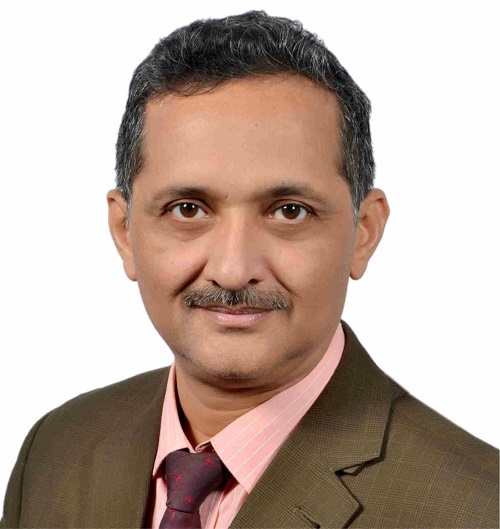Lobectomy Surgery - Meaning, Complications and Indications

Treatment Duration
2 Hours
------ To ------3 Hours
Treatment Cost
₹ 2,00,000
------ To ------₹ 3,00,000

If you have a lung disease, your doctor may suggest a lobectomy. What is a lobectomy? It is a surgical procedure of removing one of the lobes of the lungs, most commonly used to treat lung cancers.
| Surgery Name | Lobectomy |
| Alternative Name |
Lobectomy of Lung |
| Disease Treated |
Earlier Stages of Lung Cancer |
| Benefits of the Surgery |
Less invasive, Conserves more lung function |
| Treated by | Surgical Oncologist |
You can check Lobectomy Cost here.
Anatomy and Physiology
- The lungs are made up of 5 sections called lobes.
- The right lung has three lobes - the superior, middle, and inferior lobes.
- The left lung has two lobes - the superior and inferior lobes.
- A lobectomy is a surgery performed when there is a problem in some part of the lung.
- The affected lobe is removed, and the healthy tissues make up for the missing section.
Expert Doctors (10)
NABH Accredited Hospitals (10)


Why is Lobectomy of Lungs Done?
A lobectomy is done when the problem is found only in one lobe. It is most commonly used to treat people with early stages of lung cancer when the tumour is in one part of the lungs. It is not helpful when cancer has spread to the entire lungs or other body parts. Other diseases that may require a lobectomy surgery include:
- Tuberculosis
- Fungal infection
- Benign tumour
- Lung abscess
- Emphysema
How is Lobectomy performed?
The lobectomy surgery can be performed in 3 ways. The most effective surgery depends on the location and type of your lung disease, your overall health, and your doctor’s opinion. The kinds of lobectomy are as follows:
- Open Surgery
In open surgery, or thoracotomy, the surgeon makes a long incision along the side of your chest. Then, they spread your ribs apart for a better look and access to the lungs. This surgery is performed to remove the affected lobe of your lungs in stage 2 and stage 3 tumours. - Video-Assisted Thoracic Surgery (VATS)
Unlike open surgery, VATS is performed by making two to four small incisions in the side of your chest. The doctor uses a tube with a tiny video camera to look inside the lungs and assist their tools. A VATS lobectomy results in fewer complications, less pain, and faster recovery than an open lobectomy. - Robot-Assisted Thoracoscopic Surgery (RATS)
The surgery is performed by robotic hands, controlled by the surgeon. In this procedure, three to four half-inch incisions are made, resulting in minor bleeding, faster recovery, and a lower chance of infections.
What can you expect before and on the day of the surgery?
Before the surgery
- Before the surgery, your healthcare provider will ask you to undergo a Pre-Anaesthesia Checkup (PAC) and other routine tests.
- He/ she will explain the need for lobectomy and its complete procedure. Moreover, he/she will also inform you about the duration of surgery and the hospital stay.
- The doctor will ask you to stop smoking and start exercising at least a month before the surgery for faster recovery.
- They will also inform you to stop taking blood thinners like aspirin.
- You will need to fast for at least 8 hours before the surgery, which usually involves not eating after midnight.
- Make sure to inform the doctor if you are allergic to any medication, latex, or anaesthesia.
What Can You Expect on the Day of the Surgery?
- On the day of the surgery, you’ll need to complete the consent formalities.
- The hospital staff will inform you to change your clothes and remove your jewellery and non-permanent dentures.
- Your doctor may give you antibiotics with a sip of water.
- The anesthesiologist will monitor your vitals, and the team will shift you to the OT room.
What Can You Expect During the Surgery?
- You will be made to lie down on the operating table.
- The medical team will put an intravenous (IV) line into your hand or arm for fluids.
- They will give you general anaesthesia to help you sleep through the procedure.
- A breathing tube will be put in your throat, and the anesthesiologist will monitor your blood pressure, breathing, and heart rate throughout the surgery.
- The team will trim the hair in the surgical site and clean the area with an antiseptic solution.
- The surgeon will make incisions to perform the surgery.
- Once the surgery is done, the surgeon will close the incisions with stitches or staples and cover the area with a bandage.
What Can You Expect After the Surgery?
Recovery in the Hospital
- After the surgery, the team will shift you to a recovery room.
- Once you wake up, the healthcare team will monitor your vitals, such as breathing and heart rate.
- You’ll be given medicine to relieve the pain, and the doctor may order a chest X-ray to ensure that your lungs are fine.
- After an hour or two of the surgery, the staff will shift you to a room or ward.
- After the lobectomy surgery, you’ll be taught deep breathing and coughing exercises to help your lungs re-expand and prevent pneumonia and other infections.
- You’ll also be asked to move around and get out of the bed to accelerate the healing process.
- You may get a discharge from the hospital after a week of open surgery. In the case of VATS or RATS, you can go home sooner.
- The doctor will provide you with home care and follow up instructions.
Recovery at Home
- Your healthcare provider will provide specific bathing instructions to keep the cut clean and dry.
- You will be asked to continue breathing exercises and slowly increase your physical activity.
- However, your doctor will ask you to not lift any heavy items for a few months to prevent strain on your chest muscles.
- Avoid exposure to chemical fumes, tobacco smoke, environmental pollution, and people with upper respiratory infections.
First Follow-Up Appointment
- Depending on your condition, your healthcare provider will schedule a follow-up appointment 7-10 days after the surgery.
- The doctor will remove the sutures and order an X-ray to inspect the wound and healing. They will also provide further follow-up instructions.
What are the Risks and Complications of Lobectomy?
A lobectomy is a major surgical procedure that has some complications. Some potential complications include:
- Pus in the chest cavity
- Bleeding
- Infections, such as pneumonia
- A collapsed lung, preventing the lung from filling with air
- Air or fluid leaking in the chest
Your chances of having these complications after the surgery depend on your overall health.
What is the cost of the procedure?
The cost of Lobectomy ranges from ₹2,00,000 to ₹3,00,000. The cost varies based on the following factors:
- Type of Lobectomy surgery
- Age of the patient
- The medical condition of the patient
- The type of hospital facility availed - individual room or shared.
|
Procedure Name |
Cost Value |
| Lobectomy | ₹2,00,000 to ₹3,00,000 |
Last Updated on: 14 April 2023
Author
HexaHealth Care Team
HexaHealth Care Team brings you medical content covering many important conditions, procedures falling under different medical specialities. The content published is thoroughly reviewed by our panel of qualified doctors for its accuracy and relevance.
Other Treatments in Your City






















